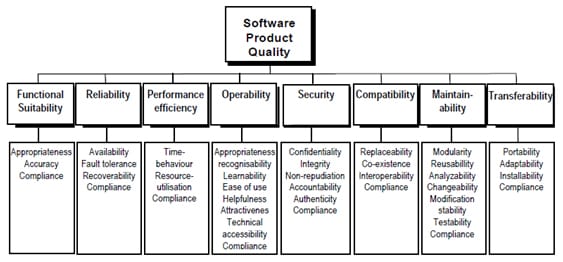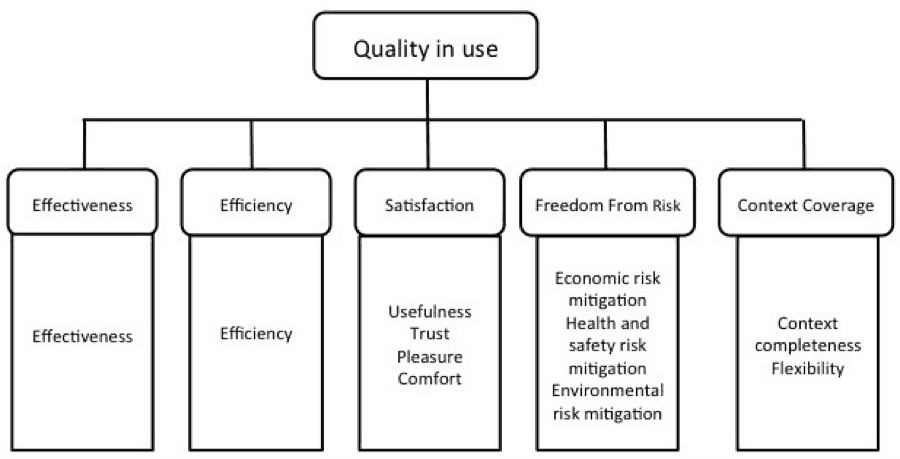Definition of Software Quality
What is the Definition of Software Quality?
Software quality is an abstract concept. Its presence can be difficult to define, but its absence can be seen instantly. Thus, in the quest for improving software quality, we must first understand the software quality definition. Wikipedia describes software quality as follows:
“In the context of software engineering, software quality measures how well the software is designed (quality of design), and how well the software conforms to that design (quality of conformance). It is often described as the ‘fitness for purpose’ of a piece of software.”
There are many variations to the meaning of quality software depending on the viewpoint (developer, end-user, management…), but if you examine the description above, “fitness for purpose” questions whether or not the software fulfills its purpose, or in layman’s terms, “Does it do what it’s supposed to do?” Those are the characteristics that we see as end-users. Quality of design and quality of conformance to that design are related to internal aspects of the software, some of which we may see, like the user interface’s navigation, placement of controls, and so on. Others, we would not normally see, like code architecture, code quality, and code security. That’s why when we work with clients on improving their software quality, we begin with digging deeper into the meaning of software quality in their context and objectives. It’s the foundation of all consulting engagements.
XBOSoft’s Awards and Recognitions
Quality in Software Engineering
In broader terms, the software quality definition of “fitness for purpose” refers to the satisfaction of requirements. But what are the requirements? Requirements, also called user stories in today’s Agile terms, can be categorized as functional and non-functional. Functional requirements refer to specific functions that the software should be able to perform. For example, the ability to print on an HP Inkjet 2330 printer is a functional requirement. However, just because the software has a certain function or a user can complete a task using the software, does not mean that the software is of good quality. There are probably many instances where you’ve used software and it did what it was supposed to do, such as find you a flight or make a hotel reservation, but you thought it was poor quality. This is because of “how” the function was implemented. The dissatisfaction with “how” represents the non-functional requirements not being met.
For this purpose, the International Organization for Standardization (ISO) developed ISO 25010 [1] as a model for specifying non-functional requirements. The model shown below illustrates the categorization of non-functional requirements.

Figure 1- [1] ISO/IEC CD 25010 Software engineering — Software product Quality Requirements and Evaluation (SQuaRE) — Quality model and guide, 2011.
Why Non-Functional Quality Components Are Important
Satisfying non-functional requirements such as performance, ease of use, and learnability first requires specifying and defining. Only after defining can they be satisfied, and satisfying them can be even more difficult than satisfying functional requirements. So what does this mean for you? Let’s examine the following non-functional characteristics using the same printing example:
Functional Suitability (functional appropriateness)
Does the function facilitate the completion of the user’s task(s) and objectives? If the user doesn’t want to print on that printer or wants to print a PDF but isn’t given those options, then maybe not.
Performance Efficiency (time behavior)
Does the printer function respond within three seconds?
Compatibility (interoperability)
Can the user print over a variety of networks and printers and on computers with different operating systems (Windows and Mac)?
Usability (learnability)
Can the user figure out how to print or will it take a rocket scientist?
Ease of Use (Context sensitive help)
How easy is it for a user to figure out, make a mistake, and then recover?
Reliability (recoverability)
When the printer is unplugged in the middle of printing a task, is the user notified?
Security (non-repudiation)
Is there a record that the printer printed the file successfully?
Maintainability (testability)
Can test criteria be specified for the print function?
Portability (adaptability)
Can the software automatically adapt to new printer models or an update in printer driver software? Can the print function provide shortcuts for highly sophisticated users?
Now that we have an understanding of non-functional requirements, let’s examine the quality lifecycle in the diagram below. Looking at the three circles below, internal quality represents the quality that you wouldn’t see and is measured by internal properties such as code structural quality. External quality represents what we have discussed above in the non-functional quality model and is typically measured by the actual execution of the code and examination of software behavior.
Software Quality Lifecycle
Here is yet another model: quality lifecycle. This model may be closer to how you perceive quality. That is, quality from an end-user viewpoint when they are actually using the software in real life and not in a lab. That’s what “contexts of use” means. For example, software quality testing can happen on a test server and have perfect test results, but end-users in their environment may have different results. They may not be able to find a button or control as easily as a tester would, or maybe they want to print directly from a place in the application that you never thought of. Thus, software quality in use can still result in poor quality measures (from the end-user point of view) even though when tested in the lab (external quality) no defects are found. On the other hand, you could find defects during static testing (code quality, internal measures), but then have no defects found during testing or in the field.
Also important to note in Figure 2 is the use of arrows and dotted lines. You’ll notice that there is a relationship between internal software quality, external software quality, and software quality in use. Namely, internal quality has an influence on, but not a direct correlation with, external quality, and that external quality depends on internal quality. Let’s think about this. This means that you can have great code quality (internal quality) and still have poor external quality (software behavior in the test lab). This makes sense in reverse too. The software might work okay, but the internal quality could be terrible.
Key Characteristics of Quality in Use
As you can see from the chart, the characteristics of quality in use (effectiveness, efficiency, satisfaction, freedom from risk, and context coverage) cover how the user completes their task in a real-life situation. Tying it together, operability (as a sub-characteristic of usability, see Figure 1) could be measured internally in conformance to the Apple Human Interface Guidelines on Navigation Bars. This would contribute to or influence the operability measured externally, whereby users can navigate through a user story. Then, the ability of users to complete a user story would be measured by quality in use. Can they do it in four seconds (efficiency)? Do they make mistakes seven out of 10 times (effectiveness)?
At this point you may be gasping for air, wondering how this fits in with CMMI and process quality. Your company may be certified as CMMI-Level 5 or perhaps you are vetting organizations for procurement and you require that they have a CMMI-5 certification. As the figure above (Figure 2) shows, process quality does fit into the overall scheme of quality in software engineering.
Using the same application of arrows and dotted lines as in the quality lifecycle diagram (Figure 2), you can see that product quality depends on process quality, and process quality influences product quality. The reason for using the magic word “influences” is that even if you have fantastic, repeatable, and improving software quality testing processes, it doesn’t mean that the processes are geared toward solving the right problem or even building the right product. So, while you may have excellent processes, you might still have mediocre products. Conversely, you could have great product quality, but poor processes. Remember the history of CMMI, developed by the Software Engineering Institute at Carnegie Melon, with funding from the Department of Defense. They were tired of getting poor-quality products. Their hypothesis was that better processes (and hence requiring CMMI certification) would result in better products. However, this didn’t always happen.
Figure 3 – Quality in Use
Why Setting Quality Requirements Isn’t Easy
Born over a decade later, Agile attempted to solve this problem, focusing on the known fact that customers change their minds not on purpose, but because their understanding of what they want can sometimes only change if they see it in a workable form.
Many say that conformance to requirements is the primary definition of quality. But as you saw from this discussion, specifying “requirements” is not an easy task. Everyone has different interpretations of text and drawings based on their context of understanding. That’s why one of the primary tenets of Agile is to deal with requirements that are changing and are sometimes incomplete or unspecified until seen. A simple “that’s what I wanted!” or “that’s not exactly what I meant” in response to a demonstration of working software beats pages and pages of documentation. That’s why an intermediate testing phase between black-box testing (external quality) and releasing to the end-users (quality in use) is sometimes a prudent way to go. This type of testing, User Acceptance Testing, is often forgotten in Agile Development processes yet is sorely needed as regression testing in the lab often misses quality facets that aggravate end-users often leading them to a perception of poor quality.
In summary, defining what software quality means to you and your software, and then developing a means to measure and evaluate, can help you improve. However, if you don’t know what or why you are measuring, you can’t evaluate, much less improve! That’s why if you’re looking for a software testing company, you want a company that has a deep understanding of software quality assurance to help you first understand what software quality means to you, your organization, and most importantly, your end-users. Explore XBOSoft’s software quality testing services!
Clients Who Trust XBOSoft
Recent Software Quality Blog Posts
Anxious Before You Release Your Software? Check These Great Tips
By Jimmy Florent | January 26th, 2022
You think you are ready to release your software product but have you thought about these often-forgotten steps?
The Best Guide To Outsource QA, Available NOW!!!
By Jimmy Florent | November 23rd, 2021
You need to outsource your QA if your software project system must be highly reliable, stable, and allow you to provide an excellent end-user experience, but you are…
Stop Right Now QA Developers
By Jimmy Florent | November 19th, 2021
The term “QA developers” sometimes sounds like a misnomer since experience has shown us that developers are not necessarily the best at doing QA…








